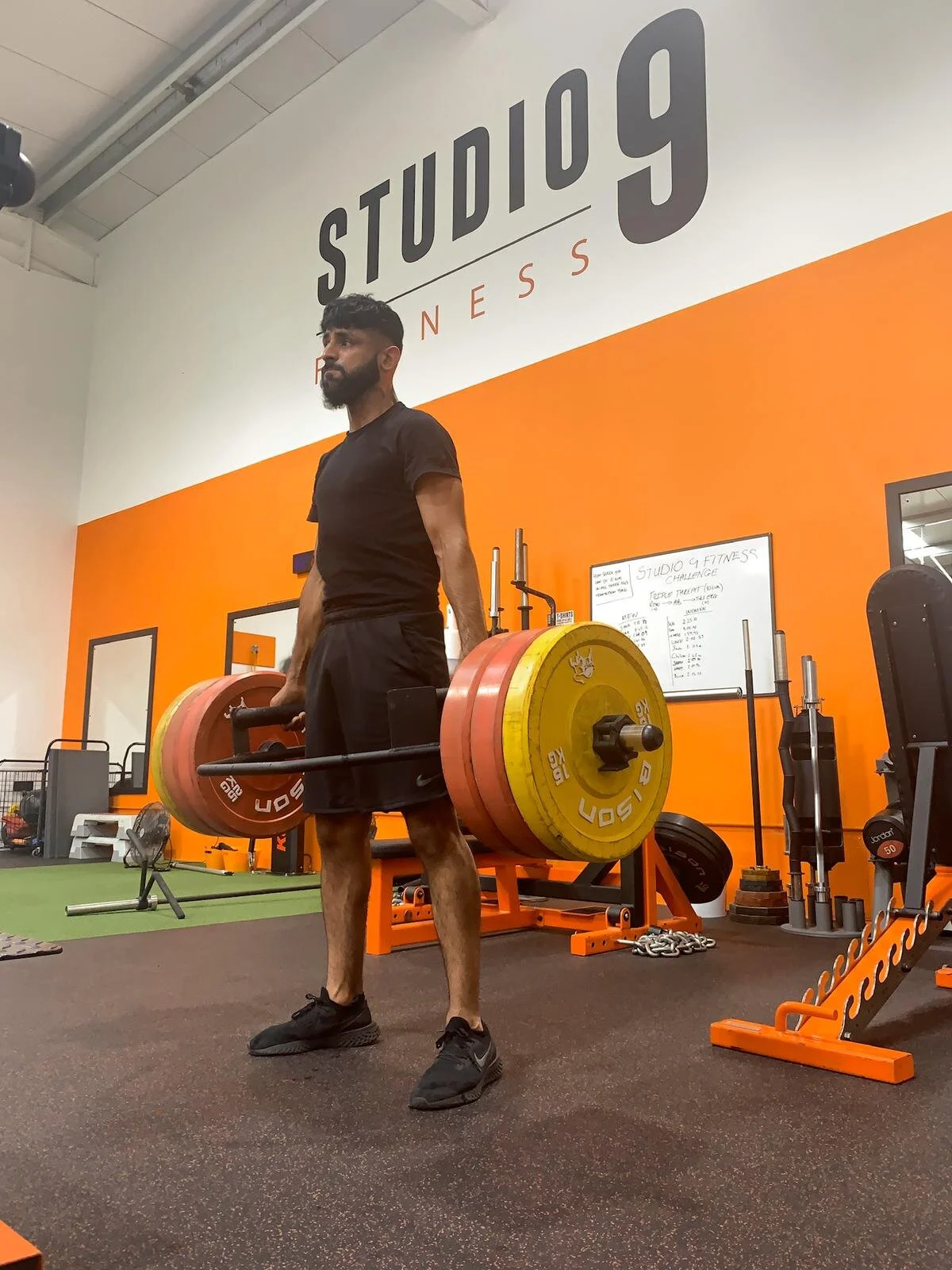This Article is Sponsored by Studio 9 Fitness. The Premier Sports Performance Facility in Wokingham, Berkshire.
Strength training is a type of physical exercise specialising in the use of resistance to induce muscular contraction which builds the strength, anaerobic endurance and size of skeletal muscles. Knuttgen and Kreamer defined strength as “the maximal force that a muscle or muscle group can generate at a specific velocity”.
Often referred to as resistance training, strength training is a specialised method of conditioning that involves the progressive use of assorted resistive loads and a variety of training modalities intended to promote health, fitness, and sport-specific performance.
When training for strength, we use muscular force against resistance. Muscles adapt to any type of resistance. The resistance can be a heavy object, one’s own body weight, elastic resistance from bands, or other types of machine resistance from pulleys or hydraulics. The heavy object could be a kettlebell, free weight, log, beer keg, rock, another person — anything that has mass.
Several biomechanical factors are also involved in strength training including neural control, muscle cross-section area, muscle fibre arrangement, muscle length, joint angle, muscle contraction velocity, joint angular velocity and body size.
It is widely accepted that strength is the ability to exert force, but there is considerable disagreement around how to measure and test strength. There are different methods available, including the 1 Rep Max test and technological developments have popularised the use of isometric strength testing and, more recently, isokinetic strength testing. You should not attempt strength training unless you are a seasoned athlete or until you have at least 6-12 months’ lifting experience.
When programming strength training, in general, we would put the harder exercises before the easier exercises e.g., multi-joint before single-joint, free weights before machines, etc. This is because as you fatigue, it’s harder to coordinate and support the movements.
For example:
Squats before hamstring curls
Deadlifts before lower back extensions
Pullups before biceps curls
In most cases, complex movements that involve many moving joints are best for strength gains. For strength and power, focus on complex, multi-joint, movement plane exercises such as squats, deadlifts, pullups, rows, weighted jumps, etc. You can also use functional type exercises such as sandbag carries, sledgehammer swings, and tire flips.
For muscle mass gain, you can use strength and power-type exercises (with medium loads) as well as targeted body-part isolation exercises, such as biceps curls or triceps extensions.
For endurance (for sport or rehab), you can use strength and power-type exercises (with lighter loads) as well as targeted body-part isolation exercises.
Many rehab-type exercises involve building endurance in specific body parts using very small movements (such as arm raises) with very light loads.
Below shows approximately what types of reps, sets, and other variables might help you meet specific goals.
Max. Strength
Exercise type: 1st pull clean/snatch, deadlift, squat, bench press
Intensity: 90-100% 1RM
Volume: 1-3 reps
Rest: 3-5 minutes
Strength Endurance
Exercise type: Squat, deadlift, bench press
Intensity: 80-90 1RM
Volume: 1-4 reps
Rest: 1-2 minutes
Strength Speed
Exercise type: Trap bar dead, cleans, med balls
Intensity: 80-95% 1RM
Volume: 1-4 reps
Rest: 3-5 minutes
Speed Strength
Exercise type: CMJ (counter movement jump), 2nd pull clean/snatch, snatch
Intensity: 80-95% 1RM
Volume: 1-5 reps
Rest: 2-5 minutes
And it’s not just about the workout itself! Residual effects of strength training can last up to 72 hours.
Extra credit:
· Those undergoing cancer treatment, or who have previously undergone cancer treatment, may benefit from strength training.
· Strength training reduces the incidence of falls in older people.
· Isometric strength training can develop strength and hypertrophy.
· Preparing the body for strength training with a dynamic warm-up can increase strength and performance.
· Save static stretching for after strength training sessions – unless you are trying to “turn off” a certain muscle group (e.g., stretching hip flexors before squatting).
Always remember... We’re BUILT NOT BORN.
NOW GO AND LIFT!
Amar Kayani
Professional Boxer, Amar Kayani Training for Strength.

